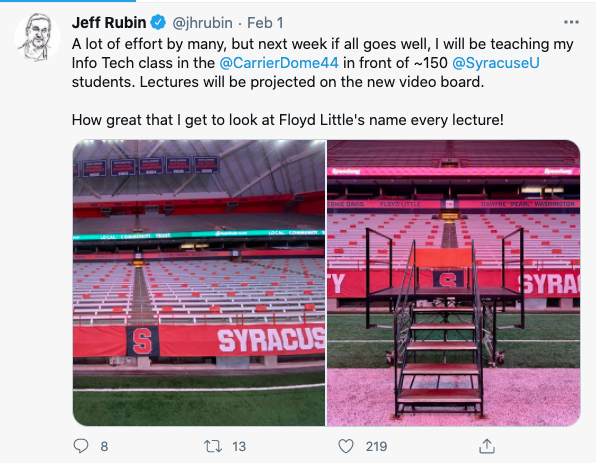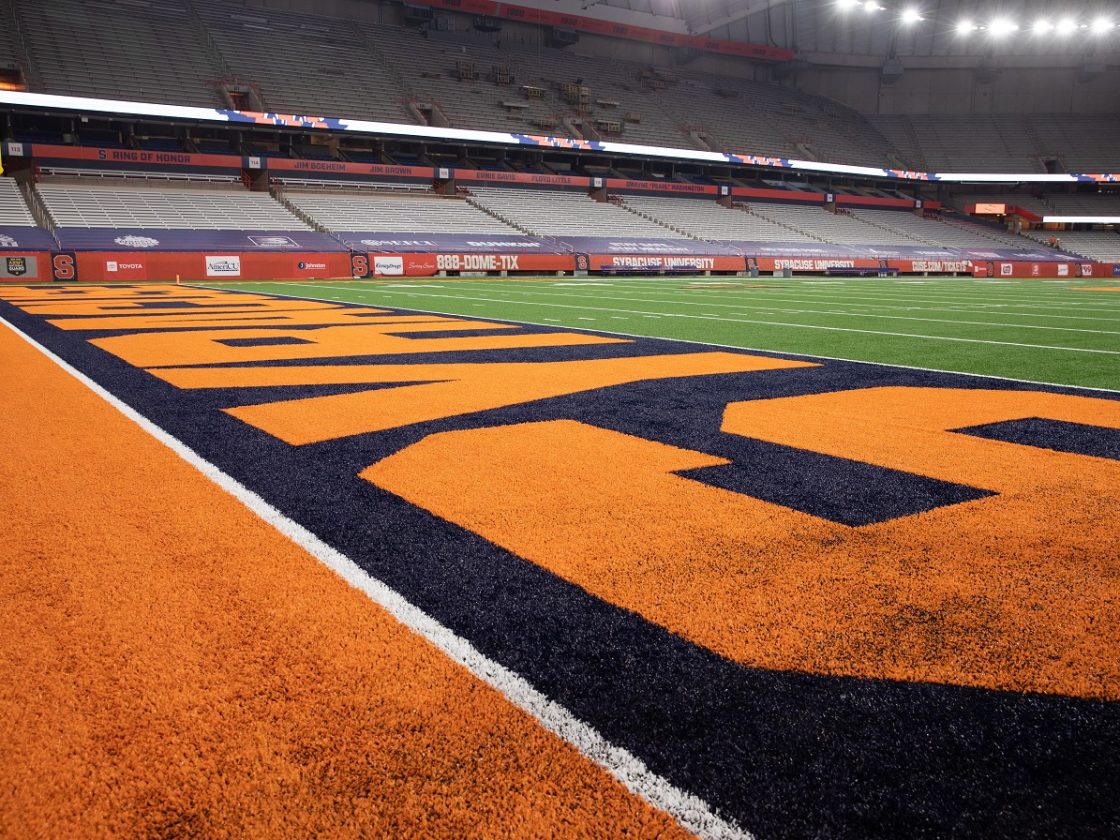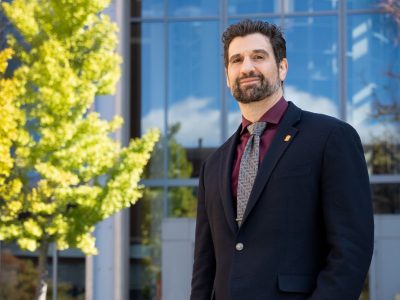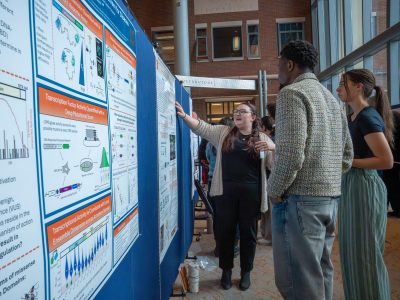Syracuse University’s beloved stadium has served as home for some of the region’s greatest sporting events, concerts and Commencement, the most important rite of passage for college students. Now, it will serve another purpose: as the University’s largest classroom ever.
The idea was first announced by Chancellor Kent Syverud at the November 2020 University Senate meeting. “We have a plan and are working hard to refine it for major spaces coming online that we will use for socially distanced academic and student life activities. We are looking at how we can best allocate and use all our space. That space emphatically includes the stadium, which is now open and the Schine Student Center,” Chancellor Syverud said. The Schine Student Center officially opens on Monday, Feb. 8.
Starting Monday, Jeff Rubin, associate professor of practice in the School of Information Studies, will teach Introduction to Information Technology to socially distanced students in the stadium. While the iconic building is known worldwide as a top entertainment venue, Rubin says his students will have a truly one-of-a-kind learning experience when they meet for his class beginning next week. He says a lot of time, thought and collaboration went into making this happen.

“I started thinking over the summer as we were preparing for the fall semester, is there any way I can teach in person with such a large class,” says Rubin. “Once [Vice President and Chief Facilities Officer] Pete Sala and Dean Raj Dewan signed off, we worked with the registrar and the stadium staff. This wouldn’t have happened without them, along with campus planning.”
Rubin says the University has been thoughtful in how it will approach the spring semester, particularly as it relates to creating new learning and gathering spaces. With the assistance of the stadium technical crew, Rubin will have access to the giant stadium video boards through his laptop computer. The same screens that replay exciting sports highlights during games will be used to display Rubin’s lessons.

“Think of all the students who’ve never been in the stadium, never seen the new video boards,” says Rubin. “There’s the cool factor of having a college class in the stadium. In my mind it’s worth a shot, and I believe it will better the learning experience for our students. As a faculty member, I feed off the energy of the students, their eyes and facial expressions. I believe students are less distracted in an in-person class and can benefit from each other’s energy.”
It’s worth noting use of the stadium for academic purposes is not unusual. Engineering students have used the stadium for yearly projects, including one lesson in which they create flying aircraft from pizza boxes. But this is the first class to be held there during the pandemic. While excited for the opportunity and experience he’s providing his students, Rubin realizes this is also a test for other courses to come.
“In my mind it’s great. We all wish we weren’t in this situation but we have to be creative. Students signed up to learn in person, and I wanted to figure out a way to do it,” Rubin says. “There are so many options for what the stadium could be used for in a larger safe environment.”



